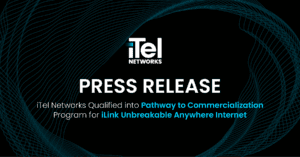Comparing P2P vs GPON fibre internet may not be something you ever expected to be doing. Many people don’t even know there are different classes of fibre internet connection – that’s right, not all fibre internet is created equal! If your business is considering upgrading to a fibre connection hoping for faster speeds, increased security, and complete redundancy then you should understand the different classes of fibre available.
P2P vs GPON
Think of GPON Fibre as water trickling down a pipe that slowly disperses through different pathways. P2P Fibre is then water that’s travelling through a pump, pushing it with force and speed to its end destination.
GPON Fibre
GPON stands for Gigabit-Capable Passive Optical Network, which is a point-to-multipoint infrastructure. The signal is sent through a splitter that fans out the data and shares it between several end users. Pooling fibre bandwidth amongst your neighbours makes it more affordable, but it also has limitations.
GPON Benefits
- Faster speeds at a relatively cheaper price point
- Often quicker to implement
- Flexible installation
GPON Limitations
- Passive, no full control of bandwidth allocation.
- Not truly symmetrical. GPON has slower upload speeds.
- Difficult to update and scale if your business needs more bandwidth in the future.
- No Quality of Service (QoS) or Class of Service (CoS), unable to prioritize critical data.
- No SLA or MTTR. Servicing could take days instead of hours.
- Less secure when all subscribers’ data is sent over the same connection.
- Scattered connections make it difficult to pinpoint failures.
- Speeds can slow down during peak usage times.
- Can’t support speeds over 1Gb.
P2P (Point to Point) Fibre
P2P Fibre is a different type of connection. Each port directly connects to an Optical Network (ONT) that’s located inside your office building. All of the bandwidth is yours, no sharing here!
P2P Benefits
- No sharing. Enjoy more bandwidth per port and per premise.
- Fully supports speeds over 1Gb.
- Truly symmetrical. Upload as fast as you download
- Future-proofed. Ability to scale your connection in the future.
- Easy to test, maintain, and fix any faults.
- Flexible. Ability to separate services and add individual features with your own switches and routers.
- SLA and MTTR. Service is guaranteed to stay up and running and repairs are made within hours to minimize downtime.
- QoS and CoS. Prioritize critical data like voice and video.
- Ability to utilize Layer 2 and MPLS networks (multi-locations, L2 to offsite backup, direct connection to cloud providers, etc.).
P2P Limitations
- More expensive to implement.
- Not always available in rural locations.
- Potentially longer rollout times.
The Bottom Line
If you’re comparing P2P vs GPON fibre, you’ll probably find that the benefits of P2P fibre completely outweigh the limitations of GPON – especially as you grow. If you’re finding that your bandwidth is bottlenecking productivity, or you’re just not sure which service would work best for your company – talk to an iTel Fibre expert. We’ll be able to assess your business network needs and find the perfect solution for you.




